Story at a glance:
- Sustainable furniture designs have expanded far beyond reduce, reuse, recycle.
- Some of the most sustainable furniture is made to last, with clever manufacturing processes.
- Small sustainable furniture companies are making a name for themselves alongside top brands.
Sustainable furniture is in high demand. Worldwide the environmentally friendly furniture market size was valued at $43.26 billion in 2022 with the expectation of growing at a compound annual growth rate of 8.6% from 2022 to 2030, according to Grandview Research.
Designers and consumers alike are increasingly looking for sustainable furniture ideas because not only are they better for the environment; they’re better for their own health, too. Sustainable furniture doesn’t off-gas, releasing harmful chemicals into the air (think new car smell), and it should also be designed to stand the test of time—keeping materials out of the landfill for longer.
What is Sustainable Furniture?
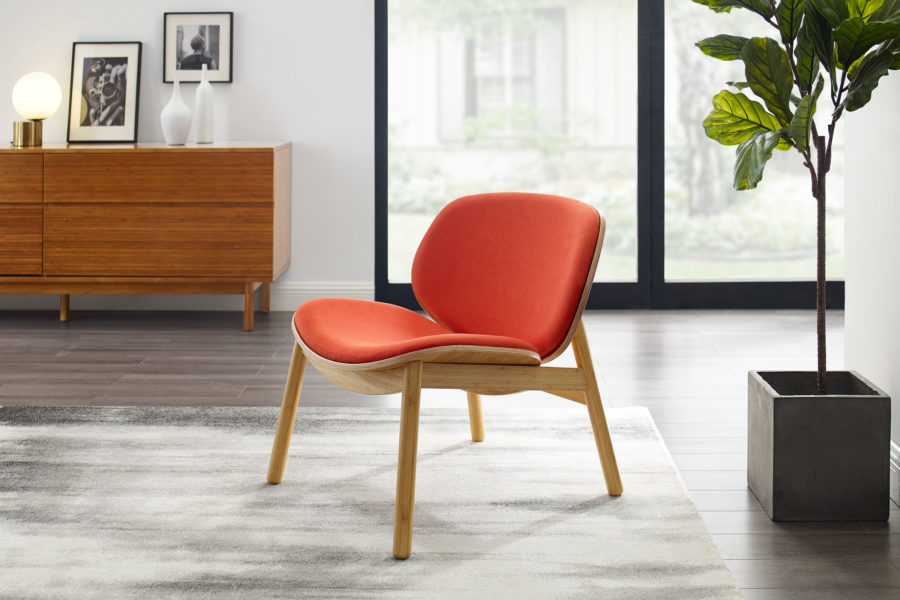
Bamboo chair. Photo courtesy of Greenington
Sustainable furniture is defined as furniture that is designed and manufactured to have the least environmental impact throughout its life cycle, with sustainable materials, manufacturing processes, and social responsibility all considered.
Materials
Sustainable furniture starts with sustainable materials. This includes using renewable resources like wood from sustainably managed forests or bamboo. Fast-growing bamboo’s inherent sustainability and durability make it a great choice of material for furniture, flooring, and decor. The Scandinavian-inspired Danica chair uses bamboo to bring a comfortable, modern, and sustainable touch to any space. Recycled and upcycled materials also help lessen the demand for new resources.
Manufacturing
Energy-efficient and environmentally friendly manufacturing methods also help make furniture more sustainable. This includes reducing water and energy consumption, minimizing waste generation, and using nontoxic or low-VOC (volatile organic compound) finishes and adhesives.
Durability and Longevity
Sustainable furniture is designed to last a long time and hold up to general use. Specifying furniture that can withstand regular use and stay in style lessens the need to replace it, further keeping things out of the landfill.
Minimal Environmental Impact
A small carbon footprint is another important aspect in the design of sustainable furniture. This considers transportation distance, packaging materials, and waste management strategies.
Social Responsibility
Sustainable furniture manufacturers often prioritize fair labor practices, ensuring safe working conditions and fair wages for workers involved in the production process. The JUST label, for example, is essentially a nutrition label for socially just and equitable organizations. As a voluntary disclosure tool for organizations rather than a certification program, it is a transparency platform for organizations to disclose their operations, including how they treat their employees and where they make financial and community investments. 3form earned the Just Label for company-wide social justice.
End-of-life Considerations
What happens to a product at the end of its life cycle is important part of what makes something truly sustainable. This can involve designing furniture for disassembly and recycling, using recyclable or biodegradable materials, or facilitating the repurposing or upcycling of the furniture.
15 Top Sustainable Furniture Brands
Some of the top brands in the sustainable furniture industry are innovating not just with recyclable materials, but in the ways they approach design, too. Here are a few brands we love.
Humanscale
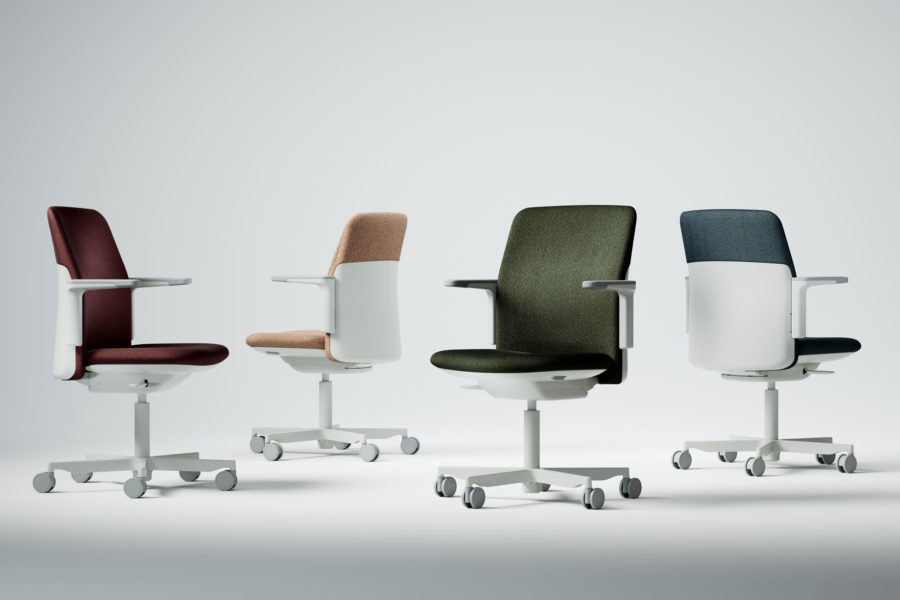
Humanscale calls its “Path” Chair the “most sustainable and ergonomically advanced task chair for every body.” Photo courtesy of Humanscale
Humanscale is perhaps one of the world’s most sustainable furniture manufacturers, with multiple commitments to the Living Product Challenge. Humanscale specializes in workplace furniture design, with everything from ergonomic office chairs to the Float Table—a minimalist standing office desk made using recycled steel and minimal parts. All Float table tops contain no added formaldehyde and are FSC-certified.
Humanscale calls its Path Chair the “most sustainable and ergonomically advanced task chair for every body.” More than 20 pounds of recycled content—including ocean plastic, post-consumer plastic bottles, and post-industrial material—combine to make the Path Chair, designed by Todd Bracher and the Humanscale Design Studio.
“Humanscale was founded on the idea that design has the potential to bring joy, health, and comfort to people’s lives,” says Humanscale Founder and CEO Bob King. “Design must also play a critical role in reversing the damage done to our environment. The Path chair represents ‘a new path forward’ in design, prioritizing the manufacturing of products that not only create comfortable, beautiful working environments, but also push forward our use of sustainable materials and manufacturing techniques.”
Path joins more than 25 other products in the Humanscale line that go beyond net zero and are certified climate-positive.
EcoBalanza
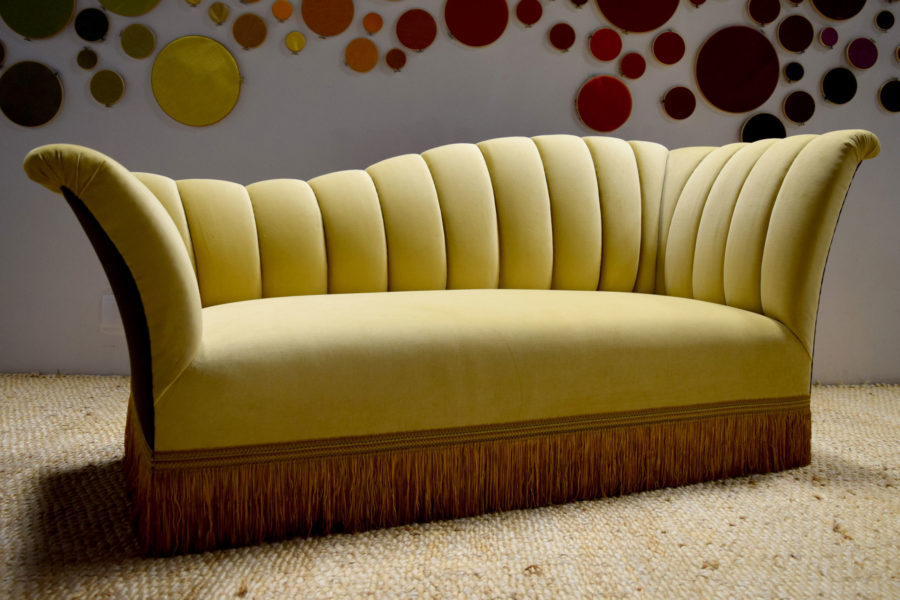
EcoBalanza is a boutique organic furniture workshop in Seattle. Each custom organic piece of furniture like this channel-tufted velvet settee is handcrafted by a team of talented artisans. Photo courtesy of EcoBalanza
Seattle furniture brand EcoBalanza is known for its commitment to handcrafting 100% nontoxic and sustainable bespoke upholstered furniture from scratch entirely from their Seattle Studio.
“We are uncompromising in our use of the highest and purest quality natural, organic, sustainably harvested, and third-party-certified nontoxic materials in the world,” Aimée Robinson, founder and master designer at EcoBalanza, previously told gb&d.
Their Essential collection, building upon the Couture collection and offering an affordable chair, ottoman, loveseat, sofa, and sectional, is made using natural and 100% nontoxic materials.
Ligne Roset

Yabu Pushelberg and Ligne Roset designed the all-foam Pukka as a cozy, tactile seating solution. Courtesy of Ligne Roset
In the 1970s, when the sustainability movement took off in France, the Roset Company was already practicing an environmentally friendly philosophy.
“For us, sustainable development begins with the pleasure we derive from working in such a remarkable location such as Briord, France. When one has the good fortune to grow and develop in an environment of such quality, one naturally wants to protect it,” Pierre Roset, president of Ligne Roset, previously said. “As the Roset Company developed, we in fact generated less and less pollution due to our own vigilance, and by the demands we make on both our suppliers and ourselves.”
The all-foam Pukka coach is just one design we love—designed by Yabu Pushelberg and Ligne Roset as a cozy, tactile seating solution. While its interesting shapes and vibrancy are made to stand the test of time, the actual materials that make Pukka also have an extra long life: Ligne Roset recycles 56% of its production waste and uses a complex ventilation system to burn wood scraps for heat in the winter.
Avocado
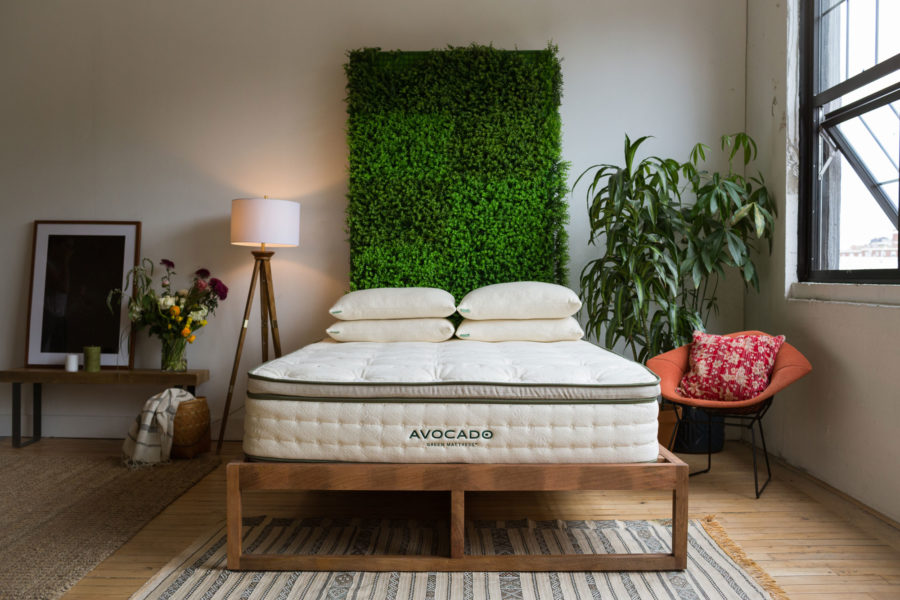
Avocado Green Mattress. Photo by Melissa Kruse
Avocado Green Mattress specializes in sustainable mattresses made from nontoxic, natural, and organic materials that people can actually afford. Avocado’s mission is to deliver green mattresses that are better for your health—and the planet’s—with a mantra for “natural, safe, and responsible” products, every one of which is GREENGUARD Gold–certified.
Each mattress is made only once it’s ordered, so inventory is never stockpiled or stored, allowing the company to reduce its carbon footprint, lower raw material waste, reduce inventory expenses, and provide more efficient shipping options.
Avocado mattresses are made with only eco-friendly and sustainable materials including 100% natural Dunlop latex rubber, pure Joma New Zealand wool, recycled-steel support coils, and premium GOTS-certified organic cotton. Avocado’s latex mattresses last nearly twice as long most common mattresses (reducing waste), and nearly every component inside each mattress can be recycled—not to mention, most of the natural materials the company uses are biodegradable.
Jonti-Craft
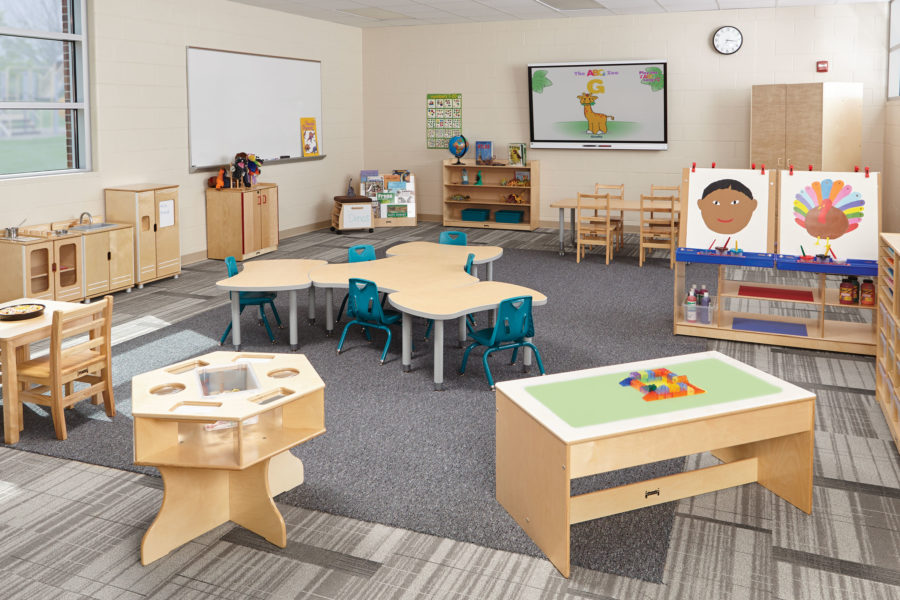
Jonti-Craft’s expansive collection of educational furniture—from colorful laminate options to sturdy Baltic Birch and modular lines—means there is an option for every learning space. Photo courtesy of Jonti-Craft
Jonti-Craft specializes in beautiful classroom furniture products that are GREENGUARD Gold–certified.
The company has been designing furniture for healthy classrooms for more than 40 years. It all started when Don and Cathy Schwarz purchased Rapid Sash and Millwork, a manufacturer of wooden toys where Don himself had interned in Minnesota in 1979. The couple saw the opportunity to apply the same strict standards and hard work used to create toys to deliver safe, quality children’s furniture to last a lifetime of learning—even if that meant surviving a pandemic.
Jonti-Craft’s unmatched durability, quality, flexibility, and reasonable price has kept classroom designer Susan Pinckney of TSKP Studio coming back for more than a decade. “Their products are durable, easy to keep clean, and the teachers love them,” she previously told gb&d. “Where other manufacturers tend to limit themselves, Jonti-Craft doesn’t. They have a really broad selection. You know everything will work together, coordinate, and last.”
Medley
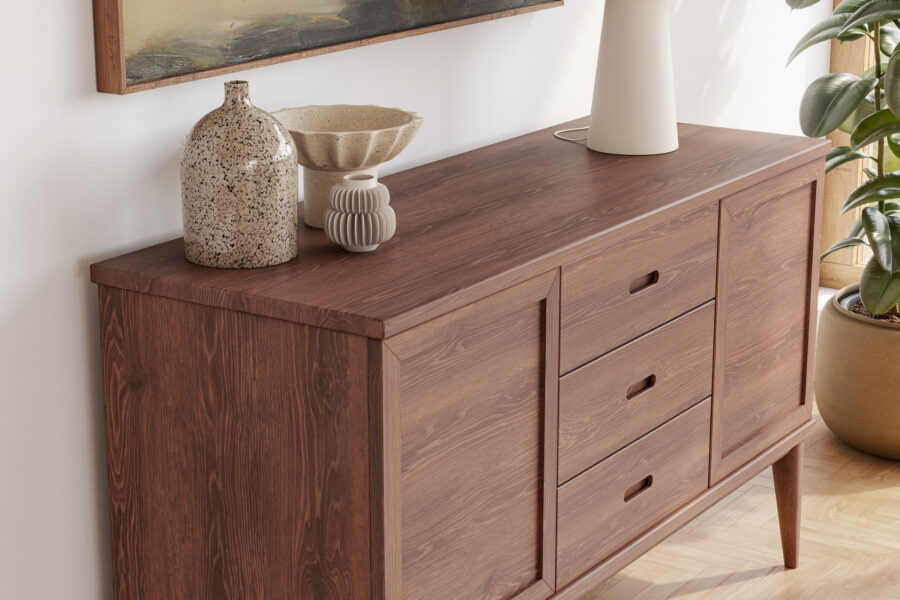
Photo courtesy of Medley
All Medley products are handcrafted in California with FSC-certified maple or walnut. The Harrison credenza seen here is protected with a natural matte beeswax finish that is odorless, no-VOC, and water- and heat-resistant.
The tiered, dual-sided cabinetry creates intentional space for anything that needs to be hidden away.
Medley was cofounded by brothers Travis Nagle and Ryan Schultz, who wanted to make beautiful, sustainable furniture that is better for our homes.
Sabai
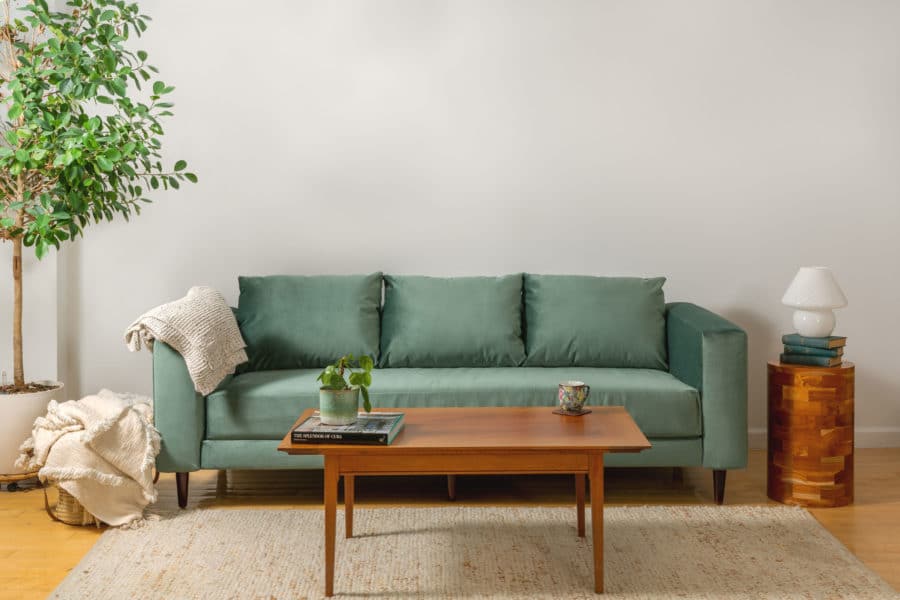
BIPOC-founded sustainable sofa brand Sabai uses recycled velvet made from 100% recycled water bottles. Photo courtesy of Sabai
BIPOC-owned, sustainable furniture brand Sabai creates beautiful, affordable furniture that is both comfortable and environmentally friendly. The innovative, sustainable furniture company was founded by Phantila Phataraprasit and Caitlin Ellen.
The velvet material of its couches is made of 100% recycled water bottles, and no water was needed to produce the velvet. This fine material is also stain-resistant and has zero off-gassing, so you can breathe easy.
Stickbulb
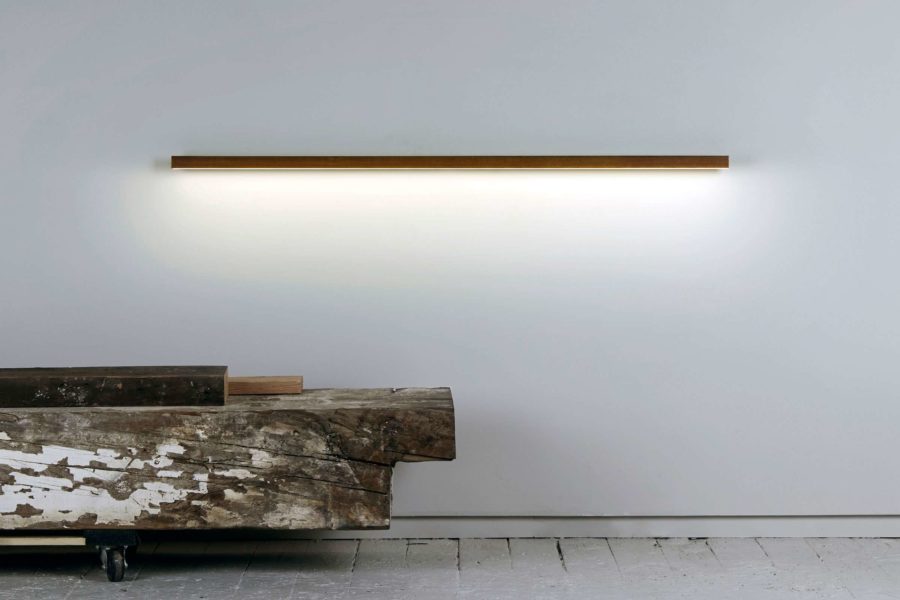
Stickbulb’s new RAY Sconce Collection incorporates sustainably sourced woods. Since its start Stickbulb’s mission has been to source only from demolished buildings, decommissioned water towers, trees that have already fallen down, and sustainably grown forests. Photo by Joseph De Leo
We love Stickbulb’s clever lighting designs. Their RAY Sconce Collection incorporates sustainably sourced woods.
From the very beginning Stickbulb’s mission has been to source only from demolished buildings, decommissioned water towers, trees that have already fallen down, and sustainably grown forests. They also emphasize energy-efficient LED lighting.
Outer
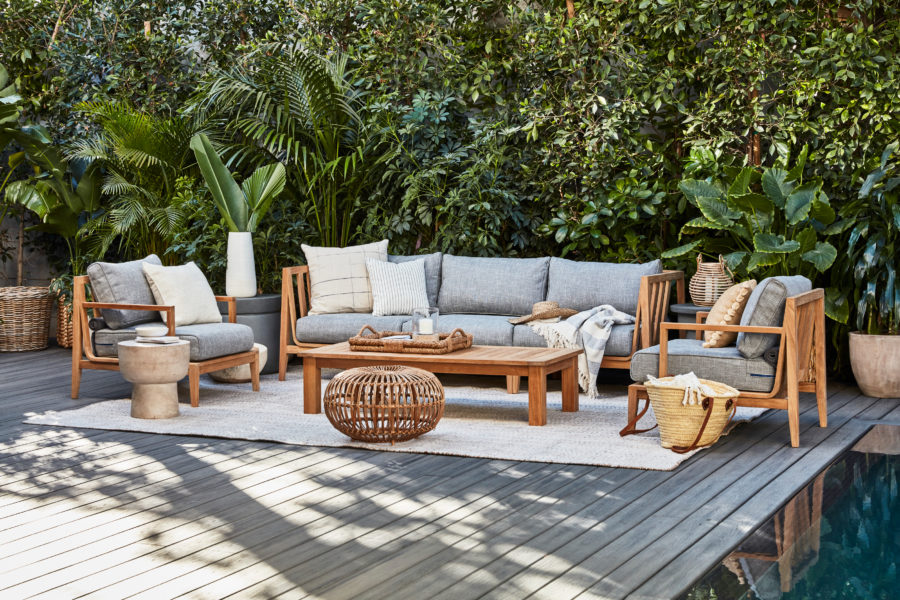
Photo courtesy of Outer
Known for their outdoor furniture, Outer encourages people to spend more time outdoors. The Santa Monica–based outdoor furniture startup uses FSC-certified wood and replants saplings.
Outer is committed to delivering the highest quality and sustainable products. Their Teak Collection, along with Outer’s previous Wicker Collection and the 1188 Outdoor Rug Collection, hits that mark. A single teak tree can absorb 10 kilograms of carbon every year. This absorption of carbon can help maintain Earth’s carbon balance in the face of climate change. “We are thrilled to see the reforestation impact we, as a growing company, can make through our partnerships with One Tree Planted and 1% for the Planet,” says Terry Lin, cofounder and chief design officer for Outer.
Herman Miller
Herman Miller is known for its modern office and home designs with GREENGUARD Certifications. The company previously reported that 85% of the company’s furniture designer’s global sales and more than 90% of its North American sales come from 60 GREENGUARD-certified products.
Since 1923 the company has been designing contemporary interior furnishings, work chairs, health care solutions, and more. In 2021 they joined MillerKnoll.
HAY
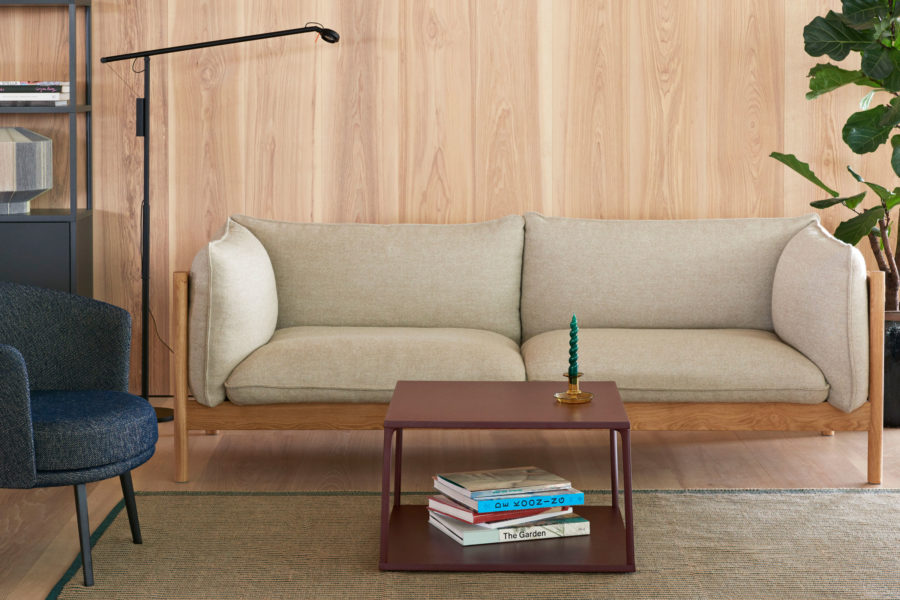
Photo courtesy of HAY
Danish furniture brand HAY focuses on developing durable products with minimal environmental impact—using sustainable materials like recycled materials, FSC-certified wood, and water-based lacquer, with a growing number of eco-certified products.
The Arbour 3-Seater from HAY is both durable and well-designed, offering an elegant seating option with a simple, clean silhouette that uses sustainable materials and design principles.
Award-winning designers Andreas Engesvik and Daniel Rybakken brought their Scandinavian design influence to Arbour using clear, logical construction and uncluttered design language.
This refined yet understated sofa was designed to qualify for the Nordic Swan Ecolabel within the European market. The Nordic Swan Ecolabel creates sustainable solutions based on a life cycle assessment and an overall goal to reduce the environmental impact from production and consumption of goods.
Skagerak by Fritz Hansen
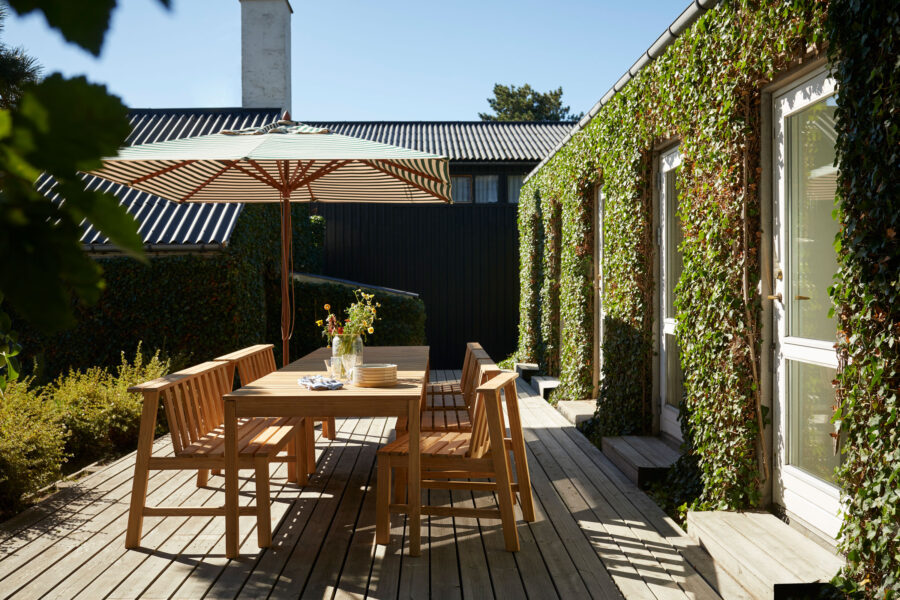
The Plank Bench was launched in 2018 and has become an important part of Skagerak’s outdoor furniture collection. It’s now joined by the table and chair. Photo courtesy of Fritz Hansen
The expanded Plank Collection now includes a chair and table alongside the popular Plank Bench. Each piece is crafted from FSC-certified teak and will patinate to a beautiful silver-gray over time.
Designer Aurélien Barbry sought to create sustainable products with minimal materials, heightened functionality, and an airy, playful, and modern effect with this collection. Skagerak is an international design company established in 1976 in Denmark focused on designing and producing high-quality furniture that ages beautifully.
Wood-Mode
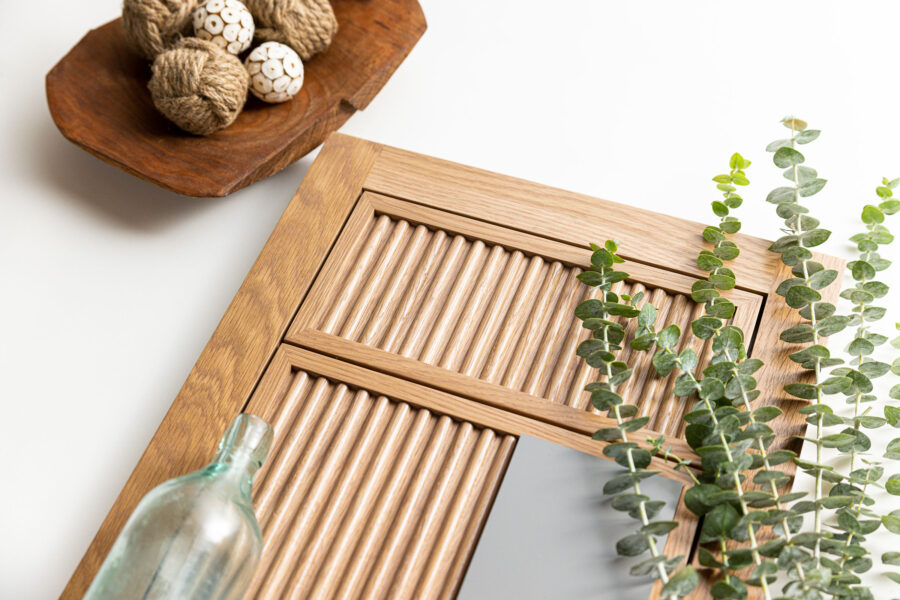
Photo courtesy of Wood-Mode
All Wood-Mode cabinetry is handmade with hand-applied finishes.
Based in Pennsylvania, the family-owned company has nearly 600 employees—many of them second- or third-generation. In early 2022 Wood-Mode announced its Focus Forward program—one of the largest strategic financial investments in the company’s history. Backed by more than $10 million in funding, the initiative included factory improvements, production equipment upgrades, new cabinet styles, and enhanced dealer marketing support programs.
Wood-Mode’s commitment to sustainability is clear across its facilities, as a 16-acre solar array is set to power 100% of two main buildings.
Roche Bobois
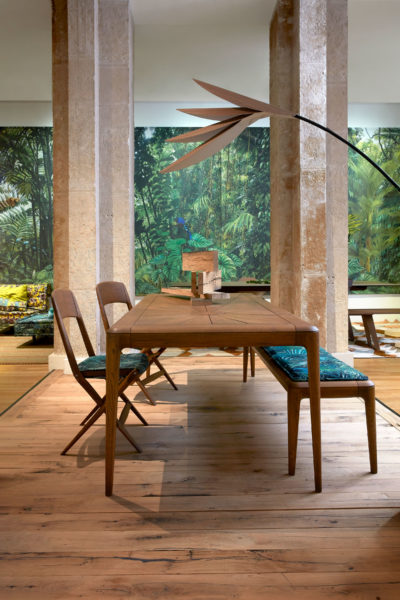
Aurea table. Photo courtesy of Roche Bobois
Roche Bobois’ commitment to sustainability shows up its own qualitative assessment tool, Eco8. Eco8 measures the impact of the brand’s products on the environment and helps them find solutions to improve them where possible. Eco8 focuses on commitment to environmentally friendly materials, manufacturing, durability of the product, and recycling.
The Aurea dining table uses reclaimed oak planks from old mineral water wagons. Designed by Sacha Lakic for Roche Bobois, this choice makes sense for the designer who specializes in both furniture and vehicle design. The car influence is also seen in the aerodynamic smooth lines and curved forms of the table. Perfect indoors or outdoors, this table adds a touch of dynamism to an age-old classic.
Keeps
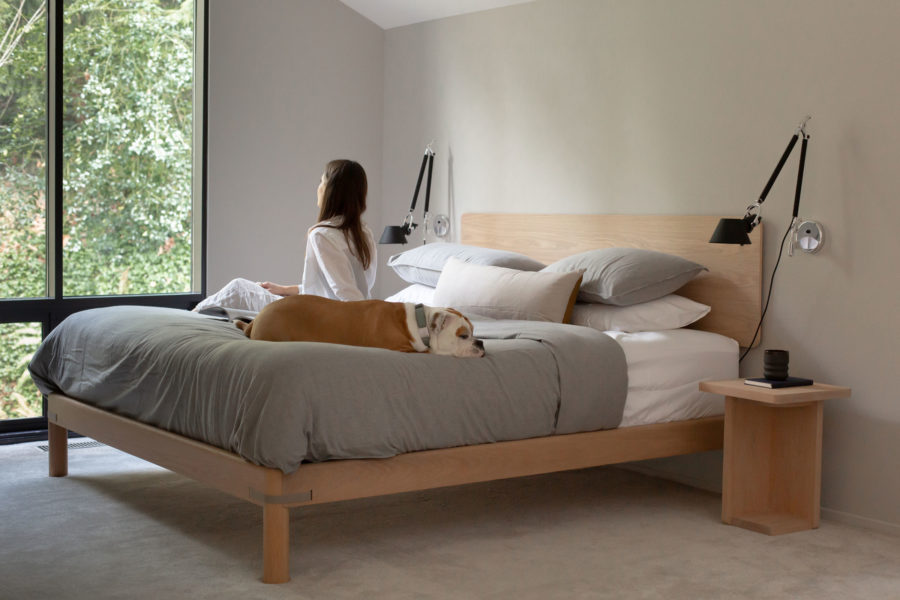
This Keeps bed is designed to last. Photo courtesy of Keeps
Keeps beds are crafted of North American white oak, an FSC-certified, high-grade hardwood commonly used in boatbuilding. They’re easy to assemble and easy to move, so you’ll take it with you wherever you end up.
A Keeps bed could be assembled and disassembled in roughly 10 minutes, all without tools. It is made from FSC-certified North American white oak and stained with plant-based oils. Keeps promises to plant 100 trees for every bed sold through Eden Reforestation Projects. The Seattle-based company was also working on a buy-back program to refurbish and resell old pieces, taking the products’ full life cycle into account.
The Importance of Sustainable Furniture
Choosing sustainable furniture matters. Furniture that is designed to last means you won’t be tossing things out in a few years. It’s also crucial to consider timeless designs for this reason.
Here we explore the environmental impact of traditional furniture manufacturing and how sustainable furniture can help mitigate these issues.
Benefits of Sustainable Furniture
Traditional furniture manufacturing can have several negative environmental impacts, so it’s important to consider furniture that’s made more sustainably. These are just some of the benefits.
Reducing Environmental Impact
Sustainable furniture manufacturers are committed to using energy-efficient technologies and practices to minimize energy consumption in their manufacturing processes. They also prioritize renewable energy sources and implement measures to reduce greenhouse gas emissions.
Enhancing Durability and Longevity
Having high-quality, durable products that last a long time reduces the need for frequent replacements—keeping waste out of the landfill and saving energy to make new products.
Supporting Local Economies
Many sustainable furniture brands, like Medley and Stickbulb, for example, are made locally in the US using sustainable and repurposed materials. These furniture manufacturers work with local people and your money stays in the local economy.
Promoting Healthier Living Spaces
Furniture designs that are truly sustainable are low- or no-VOC, so you don’t have to worry about off-gassing. This leads to healthier living spaces.
Minimizing Waste
Durable products mean less replacement in the future—again, minimizing the amount of waste that ends up in the landfill.
Encouraging Responsible Forest Management
Traditional furniture manufacturing often relies on the extraction of timber from natural forests, leading to deforestation and habitat destruction. This contributes to biodiversity loss and disrupts ecosystems.
Fostering Ethical Labor Practices
Super sustainable companies will also tell you about their ethical labor practices. You can check the authenticity of these claims by searching for a JUST label. JUST is a nutrition label for socially just and equitable organizations. It’s a voluntary disclosure tool for organizations that want to disclose their operations, including how they treat their employees and where they make financial and community investments.
Providing a Sense of Well-Being and Satisfaction
Many sustainable furniture designs emphasize biophilic design. Using a natural material like wood stimulates an innate and positive biophilic response in building occupants.
Common Types of Sustainable Furniture
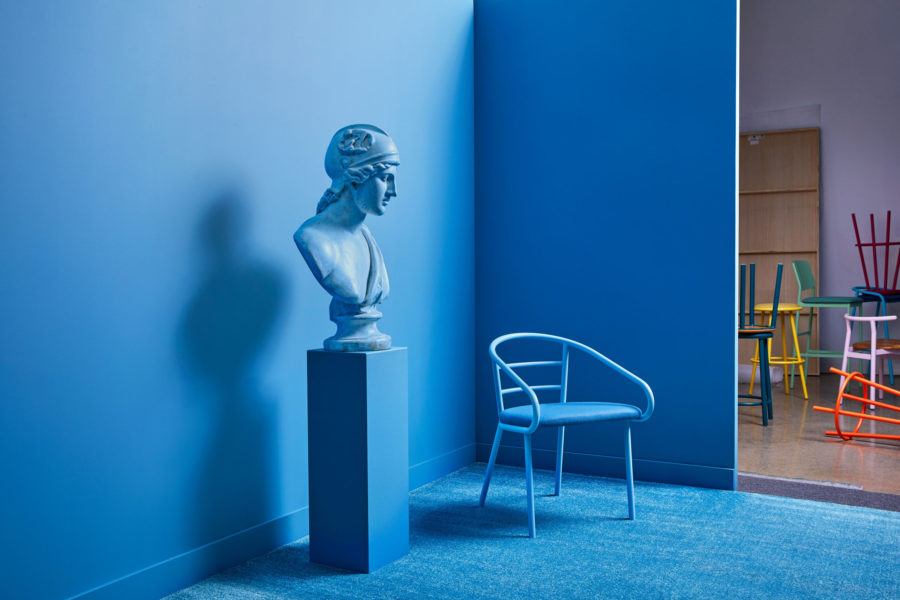
The Wedge with its deep seat and elegant curve in playful colors like antique pink or Division Light Blue with a Haven Hyacinth seat. Photo courtesy of Division Twelve
Some of the most popular sustainable furniture designs can be found across residential and commercial spaces—from office chairs and conference tables to sofas and bedding. These are some of the most popular materials and types of sustainable furniture today.
Reclaimed Wood Furniture
Reclaimed wood can help you earn LEED points on projects.
Kevin Fults of Woodstock Architectural Products describes wood as a natural sponge. “It can work as an insulator with air pockets in its cellular structure that help it slow the conductivity of heat. Wood also absorbs moisture adding to improved indoor air quality. Its ability to moderate humidity maintains balance with surrounding air, meaning it will alter humidity when the air is too dry or too moist. Breathing easy is a breeze when using reclaimed wood in the interior of buildings,” he previously wrote for gb&dPRO.
Reclaimed wood is not only for walls but also flooring, architectural panels, moulding, doors, countertops, tables, shelves, beams, and ceiling panels.
Compared to its construction material counterparts, wood emits up to 29% fewer greenhouse gases and releases up to 20% fewer pollutants into the air.
Bamboo Furniture
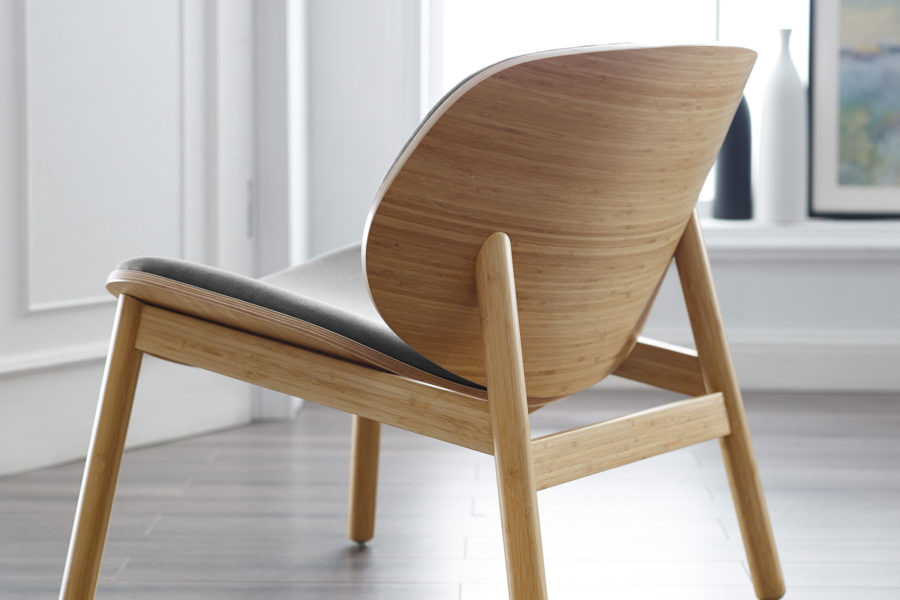
The Scandinavian-inspired Danica chair uses bamboo to bring a comfortable, modern, and sustainable touch to any space. Photo courtesy of Greenington
Bamboo’s inherent sustainability and durability make it a great choice of material for furniture, flooring, and decor.
Greenington—a Kent, Washington–based bamboo furniture company—created the Scandinavian-inspired Danica chair, bringing a comfortable, modern, and sustainable touch to any space.
Each Danica chair, which comes in red or gray, has a minimalist design with pronounced curves and an elliptical seat and backrest, making it a sleek bamboo design idea. Founded in 2004, Greenington has long been creating high-quality sustainable furniture with a zero-waste manufacturing process. The company is a founding member of the Sustainable Furnishings Council.
Recycled Metal Furniture
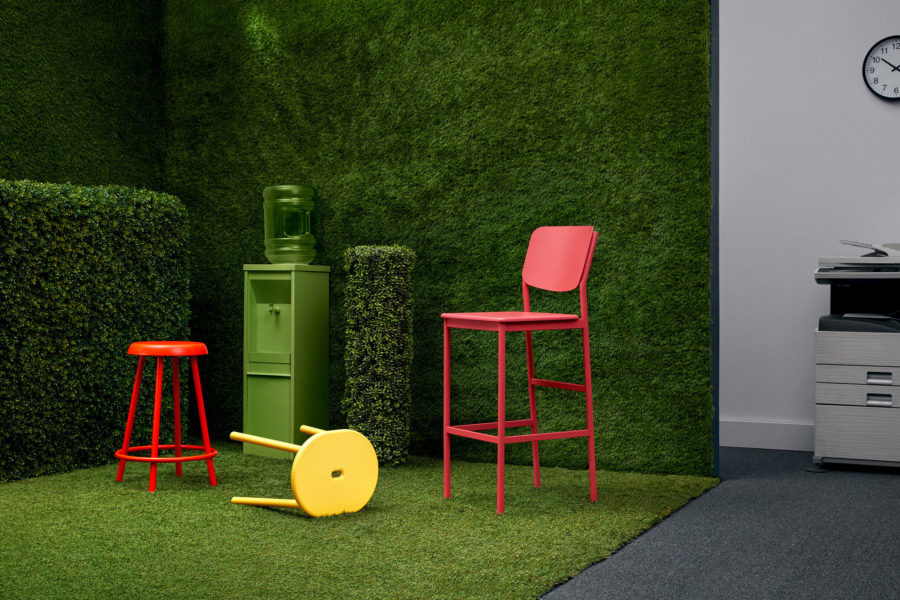
Division Twelve’s line of bent-metal furniture is colorful, versatile, and carbon neutral. Photo courtesy of Division Twelve
Metal is not only often strong—it’s easy to recycle. These bent metal chairs from Division Twelve are colorful and carbon-neutral.
To achieve carbon-neutral status, Division Twelve reduced carbon emissions at every stage of its processes—from design and the materials they used in production, distribution, and end-of-life.
Recycled Plastic Furniture
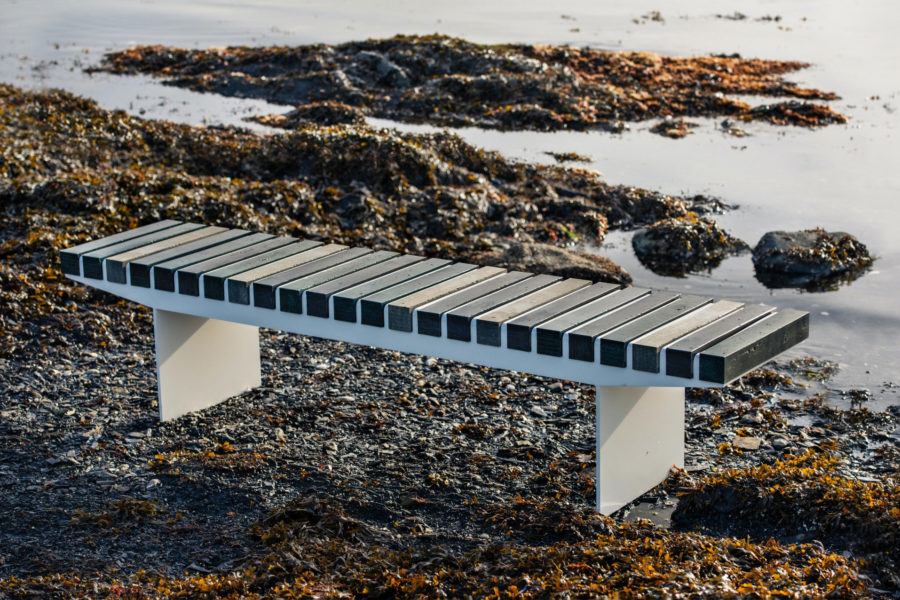
Photo courtesy of Vestre
The possibilities for recycled plastic are endless; why not incorporate it into modern furniture designs? Outdoor furniture company Vestre has done just that with Ogoori, a company that collects marine plastic to be repurposed in furniture design. The initiative takes waste collected from the ocean and transforms it into plastic for brands to use in future products.
Take Coast, for instance—a bench from Vestre made from ownerless marine plastics collected by Ogoori. “It’s an inspiring and gratifying task to design a bench that uses plastic collected from beaches with the help of volunteers,” said Allan Hagerup, who designed the bench, in a press release. “It feels really good to have created the first bench from this material for Vestre, and to contribute to sustainable development with a product that will be accessible to everyone.”
Upcycled Furniture
Upcycled furniture is created by repurposing or transforming discarded or unwanted materials into new and functional pieces.
ARCH Production & Design says upcycling is easy if you follow the proper steps. “Our team has been upcycling and recycling commercial artwork for a decade. I personally take great joy in repurposing the remnants of past commercial projects into new ones. This is also a great opportunity for our designers to “Shop the Shop” and design based on what we have. Sometimes that makes designing a bit more challenging, but we believe it is worth it in the long run for the planet by reducing the number of new materials we use,” Founder Evan Collier previously wrote for gb&d.
Certified Sustainable Hardwood Furniture
Certified sustainable hardwood furniture is made from wood sourced and manufactured to meet recognized sustainability standards and certifications.
One of the most widely recognized certifications for sustainable forestry is the Forest Stewardship Council (FSC). The FSC sets standards for responsible forest management, addressing criteria such as biodiversity conservation, protection of indigenous rights, and sustainable harvesting practices. When furniture is labeled as FSC-certified, it means that the wood used in its production comes from FSC-certified forests or reclaimed and recycled sources.
Furniture Made from Sustainable Fabrics
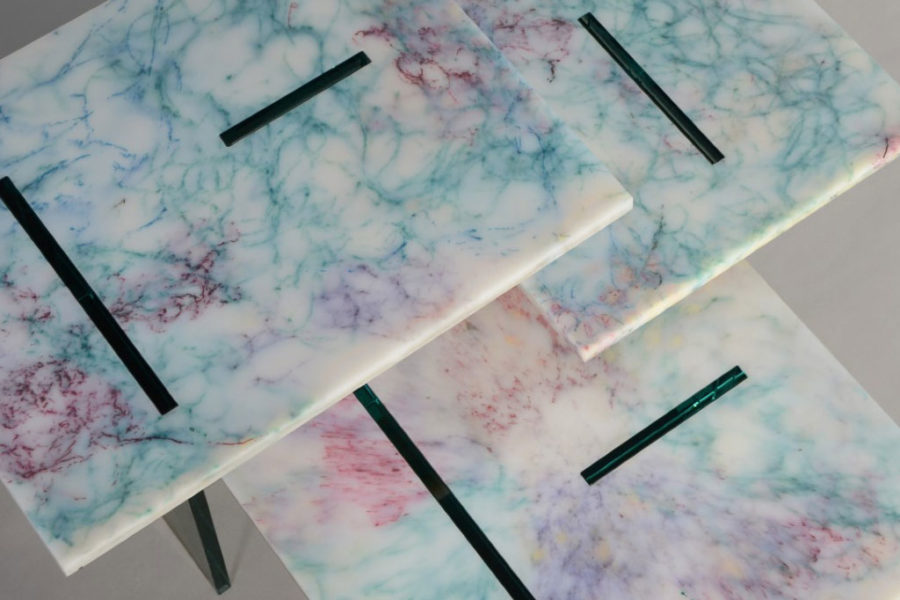
The tabletops of alcarol prototypes are made of colorful fishing nets from the ocean melted together with ECONYL polymer, produced through an innovative and sustainable chemical process that regenerates nylon waste including fishing and aquaculture. Photo courtesy of alcarol
The textile industry generates one-fifth of the world’s industrial water pollution, and textile dyeing is the second largest water polluter in the world. Enter sustainable fabrics. Natural, semi-synthetic, and even synthetic fabrics can sustainably be used in shade structures, carpets, wall coverings, and more.
Today’s designers are turning to ECONYL® nylon to solve modern design problems for a more circular economy. What started with inventive rugs has now expanded across flooring and into furniture, lighting, 3D printing, and even fashion, as more and more designers specify the innovative regenerated nylon.
ECONYL is made entirely from waste, is 100% recyclable, and offers up to a 90% reduction in global warming potential compared to standard nylon. Designers are increasingly turning to it to create incredible new designs—from carpet to chairs to handbags.
Cork Furniture
Cork furniture is made primarily or partially from cork, a versatile and sustainable material derived from the bark of the cork oak tree. Cork is loved for its light weight, springy texture, and ability to naturally regenerate over time.
In recent years cork flooring has exploded in popularity thanks to its extremely sustainable production process. Unlike hardwood or bamboo flooring, cork flooring does not require that the entire plant be harvested—rather, the bark of cork oak trees is all that’s needed. As long as this process is done correctly, a single cork oak tree can be harvested every nine years without sustaining damage.
Key Factors to Consider When Buying Sustainable Furniture
Before buying your next piece of sustainable furniture, consider the materials it’s made of as well as how it was made. Consumers should ask: Was this piece of furniture really manufactured sustainably? How do I know? Will this design last for many years to come? When it reaches its end of life, can it be recycled? Will it break down? Or will it ultimately live in a landfill until the end of time?
The Future of Sustainable Furniture
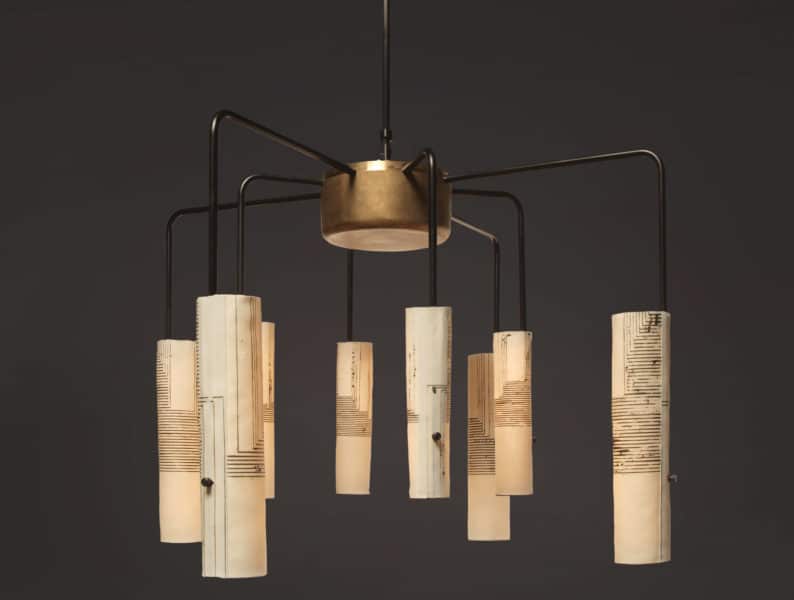
Photo courtesy of Skram
Sustainable furniture is growing in popularity, and more and more designers are committed to making it the norm. Designers like Jacob Marks at Skram Furniture Company aren’t interested in taking shortcuts. Rather, they commit to the process of creating beautiful, modern, and “heirloom quality” furniture—pieces that are designed and built to last as long as the life of the trees from which they’re made.
Skram builds made-to-order high-end furniture for interior designers all over. “We try to offer people a chance to confront their attitudes about the objects that surround them,” Marks previously told gb&d. “To choose things that are more precious, and to embrace the scratches and dings that develop over time or when your kids draw on them … the kinds of things that bring meaning to objects.” In promoting a “buy it once and buy it right” mentality, the designer challenges today’s culture of disposability—the all-too-familiar practice of buying cheap mass-produced pieces destined to become landfill castoffs when they’re ousted by the next big trend or start to break down.
3D printing is also expected to improve the sustainable furniture market, according to experts like those at Aquafil, which produces ECONYL. ECONYL nylon reduces the global warming impact of nylon by up to 90% compared with the material generated from oil. The regenerated nylon can be used in everything from colorful carpets to 3D printed objects to apparel.
Conclusion
By adopting sustainable practices, furniture manufacturers can significantly reduce their environmental impact, conserve resources, promote responsible sourcing, and contribute to a more sustainable future.




